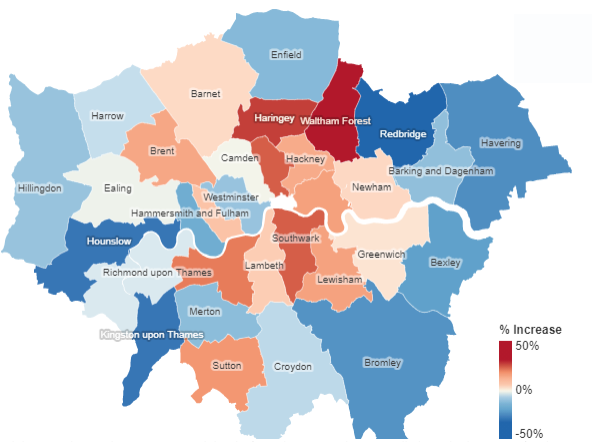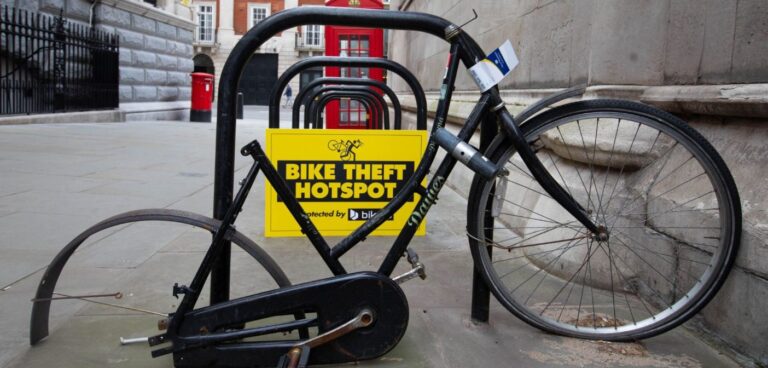Police data has revealed which areas in London saw a surge in lockdown bike thefts in London last year, with northeast London being worst affected.
Waltham Forest was the borough with the greatest increase at almost one third (30.88%), followed by Haringey (27.52%), Southwark (23.92%), Islington (23.9%) and Wandsworth (20.66%).
The data, collated by London criminal defence solicitors Lawtons, was released on 3 February 2021 and reveals statistics up to September 2020, encompassing the first six months of Covid restrictions and the peak spring/summer cycling season.
In London, 1.1% of bike thefts result in prosecution, according to the latest data on criminal sanctions, falling to 0.96% in Waltham Forest. The borough where people were least likely to identify a bike thief and recover a stolen bike was Bexley, with just over a 1 in 200 (0.65%) chance of the thief being identified. This was followed by Harrow at 0.68%, and Bromley with a 0.69% chance.
While some boroughs saw a rise in bike thefts, other areas that typically have higher rates for the crime experienced a fall. For example, though the borough of Westminster has had the highest rate of bike theft in previous years, there was a 7.77% decrease last year. Furthermore, Redbridge saw bike theft fall by 30%, and Hounslow by 27.21%.
According to Lawtons, this is probably attributable to people not using their bikes to commute and then leaving them unattended for periods of time. Conversely, the borough people were most likely to have their bike returned was Hackney, with 2.83% of bicycles found. Next highest was Westminster with 2.63%, followed by Tower Hamlets with 2.23%.

Nick Titchener, criminal defence solicitor at Lawtons, said: “Bike theft is definitely becoming more of a problem, and the numbers are a testament to this. Unfortunately, suspects aren’t being identified because there’s usually no relationship between themselves and the victim and it’s a relatively low-priority crime.
“On top of this, owners often don’t document the ownership of their bike, making it difficult to prosecute even if the perpetrator is caught. It’s essential that you document your bike to help you recover it in the case of theft.
“Keep your receipt, make a record of the serial number and register your bike with a bicycle marking and registration scheme. This will enable the police to trace your bike back to you if it is stolen and recovered.”
In an effort to avoid public transport, many Londoners living in zones 2 and 3 took up cycling throughout the UK’s lockdowns. Last autumn, journeys by bike were reportedly up by 22% in Greater London and 7% in inner London compared to the previous count by Transport for London in spring 2019.
Lawtons said criminals have seen the bicycle boom as a new opportunity, targeting the property of new cyclists who bought bikes during the lockdown. Experts have warned that the trend is expected to continue this year as the London heads towards spring and improved weather, alongside the lifting of lockdown restrictions.
Chris Smith, managing director at Pendle Bike Racks, said: “Hopefully cyclists will have registered their bike with BikeRegister and placed a security mark on their bike. The mark serves as a visible deterrent, because the owner of a marked bike can be traced and the odds of arrest/prosecution are significantly higher.”



